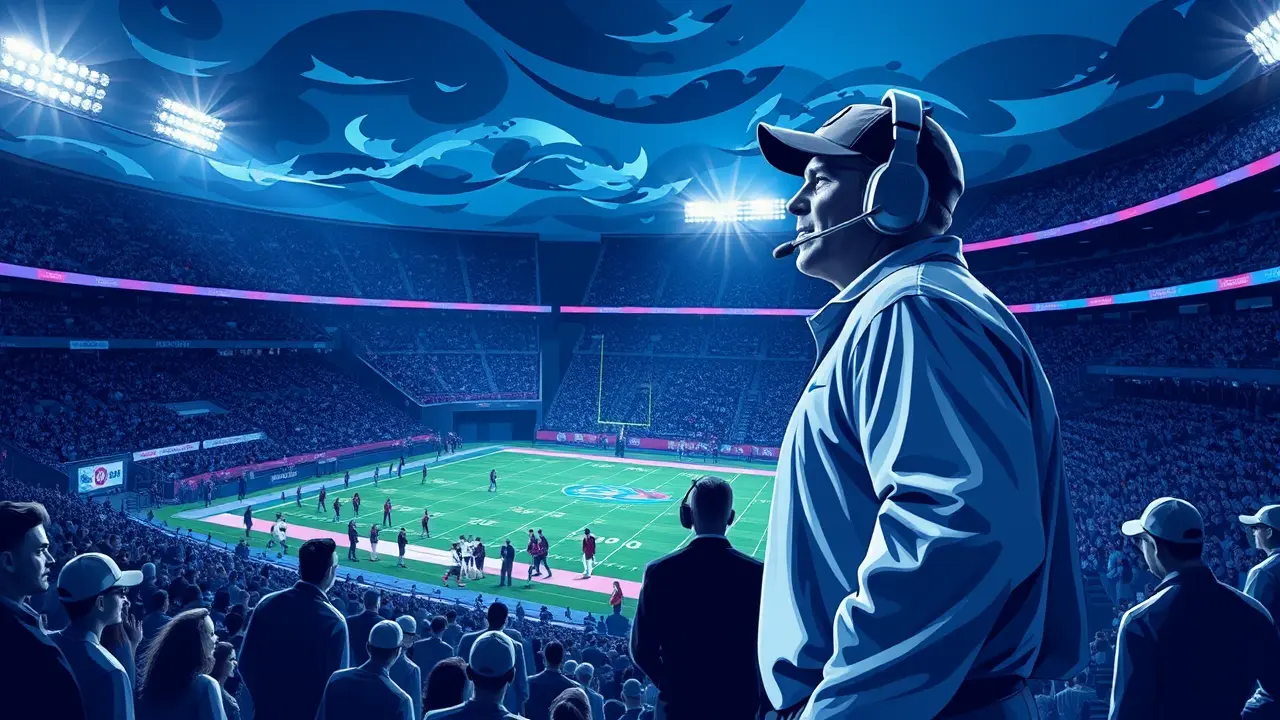
SportfootballFIFA World Cup
Here's What Azteca Stadium Will Look Like for the 2026 World Cup
JA
Jack Turner
1 day ago7 min read
The hallowed turf of Azteca Stadium, that colossal concrete cauldron in Mexico City which has witnessed more footballing divinity than perhaps any other pitch on earth, is undergoing a radical transformation, a phoenix-like rebirth ahead of its sacred duty to host the opening match of the 2026 World Cup on June 11. This isn't just a renovation; it's a surgical enhancement of a living legend, a venue that doesn't just have history but *is* history, its very foundations echoing with the ghost of Pele’s 1970 triumph and Maradona’s ‘Hand of God’ in 1986—moments that, when stacked against modern greats like Messi, still define the absolute zenith of the beautiful game.The core upgrades—a pristine new playing surface to replace the hallowed grass once graced by legends, a state-of-the-art roof designed to contain the deafening roar of 87,000 faithful, and countless behind-the-scenes modernizations for broadcast and player comfort—are the necessary evolution for a tournament that will be faster, more global, and more technologically scrutinized than any before it. But for purists, the calculus is more profound: how do you upgrade a shrine without desecrating its soul? The original Azteca, opened in 1966, was a monument to ambition, built for a World Cup and now preparing for its unprecedented third, a record that separates it from every other stadium in the world, much like Lionel Messi's eight Ballon d’Ors separate him from mere mortal players.The new roof, for instance, isn't merely about weatherproofing; it's an acoustic engineer's dream, designed to amplify the visceral, wall-of-sound passion of Mexican fans, a force that can unnerve opponents as effectively as a high-press system, turning the stadium into a tactical weapon itself. The pitch replacement is a logistical marvel, involving subsurface heating and drainage systems that would make a Dutch engineer weep with joy, ensuring a billiard-table surface for a modern game where a misplaced bounce can cost a nation everything, a lesson learned from the unpredictable pitches of past tournaments that often acted as a great equalizer, much like a stubborn, deep-lying defence can neutralize a possession-heavy team like Pep Guardiola's Barcelona.The broader context here is the unique tri-host model of USA, Mexico, and Canada, and Azteca’s selection for the opener is a powerful nod to football’s heartlands, a symbolic bridging of the commercial might of American sports infrastructure with the raw, tribal passion that defines the game in Latin America. One can analyze the stadium's legacy through a statistical lens: it has hosted two World Cup finals, witnessed over 19 World Cup matches, and been the stage for countless club football epics; its win-draw-loss record for Mexican national team games alone would be the envy of any top-tier European side.The modern upgrades also serve a darker, more analytical purpose—future-proofing against the extreme weather events of a changing climate in Mexico City and meeting FIFA's increasingly stringent security and broadcasting demands, which now include enough fibre-optic cable to wrap around the pitch a thousand times, ensuring every blade of grass is captured in 8K resolution for a global audience that expects perfection. The consequence of this renovation extends beyond the 90 minutes of the opening game; it secures Azteca's financial and cultural viability for another half-century, ensuring it remains the home of Club América and the Mexican national team, a fortress where future generations can create their own legends, perhaps a young Mexican prodigy who might one day be compared to Hugo Sánchez or a visiting superstar whose performance might finally be deemed worthy of comparison to the gods of '70 and '86. In the end, the 2026 version of the Azteca will be a hybrid of sacred memory and hyper-modern necessity, a temple where the ghosts of past World Cups will watch over a new generation, all under the gleaming cover of a new roof, on a perfect new pitch, waiting for the first whistle to blow and for history to be written once again.
#featured
#Azteca Stadium
#2026 World Cup
#stadium renovation
#opening match
#soccer history
#venue upgrades
Stay Informed. Act Smarter.
Get weekly highlights, major headlines, and expert insights — then put your knowledge to work in our live prediction markets.
Related News
© 2025 Outpoll Service LTD. All rights reserved.














